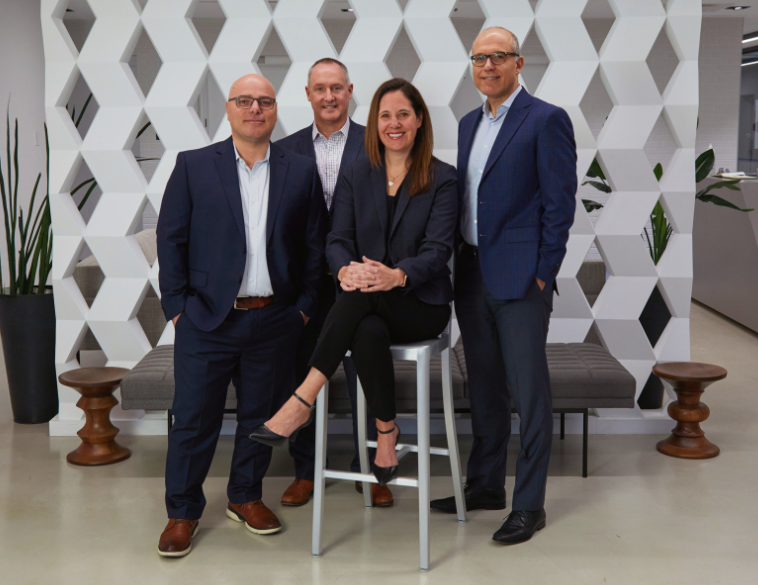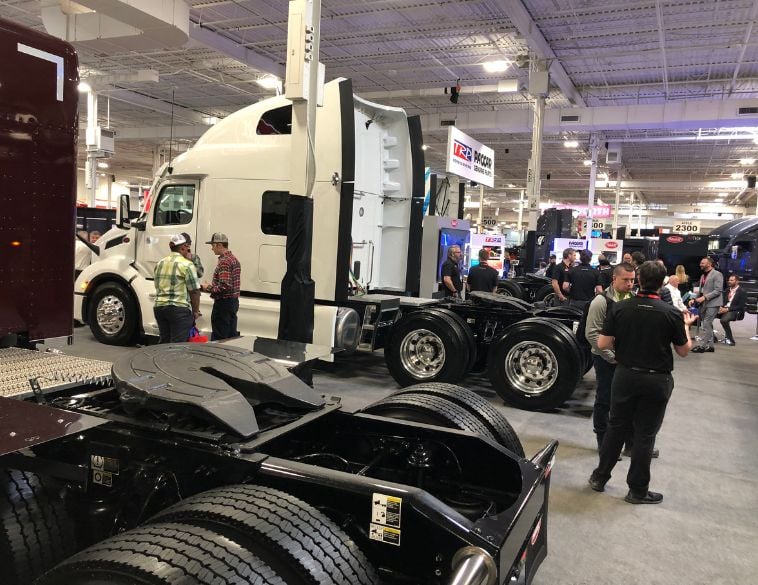Now, more than ever, fleet professionals need guidance from strategic partners who can help them navigate the detours ahead.
As the automotive industry continues to grow and evolve, fleet managers may find it difficult to keep up with the pace of change. Now, more than ever, the need for professional advice and strategic support from industry experts is essential, especially as fleets continue to juggle supply chain uncertainty, multifaceted electrification projects, advances in technology, rising costs, and other complex issues.
Moreover, the best practices that worked in the past provide a solid foundation, but they need to continue to evolve to keep pace with an industry very much in flux. “That’s why our goal at Holman is to stay on top of these changes,” explains Eric Attias, Vice-President, Canadian Sales, Holman. “We’re continuing to expand our organizational capabilities and we’re putting an emphasis on developing our people so we can continue to be reliable advisors to our customers.”
Supply chain uncertainty
Holman’s Canadian leadership team is sharing their insights and perspectives so that today’s fleet professionals are better prepared for the bumpy road ahead. Among the biggest bumps in this road are lingering supply chain disruptions.
“I’m cautiously optimistic about 2023,” says Romy Bria, Vice-President of Client Relations at Holman. “Although we’re going to continue to see a shortage of new vehicles, I think we’re better off now because as an industry, we’ve learned how to navigate these shortages.”
As fleets continue to use existing assets beyond their expected lifecycles, “we’ve adjusted. We’ve reviewed the data, we know the impact of this change, and we can help our customers understand which vehicles they should continue using. We know how to minimize the costs associated with keeping a vehicle on the road longer than expected, and how to limit downtime,” Bria adds.
Kathryn Foster, Director of Strategic Services for Holman agrees. “We have helped our clients understand how to face the ongoing supply chain challenges,” she says. “We’ve been able to help them with budget preparation, prioritizing model replacement, adjusting to the new allocation-based ordering model and other challenges.”
Bria and Foster say that they’re seeing small improvements in the supply of new vehicles. “However, from a supply and availability perspective, the pent-up demand from the last few years remains,” Foster adds. “So the ability for the market and the OEMs to catch up to that demand is going to take a few years.”
Fleet electrification
The next bump in the road ahead is electrification. “We’re seeing the ‘fast follower’ concept at play,” Foster explains. “Electrification is a buzzword, everyone knows it’s important, and it’s not going away.”
Here again, Holman’s team is ready to provide the insight and guidance fleet professionals need to seamlessly transition to electric vehicles, while avoiding costly mistakes along the way. “You need to involve other stakeholders from across your business: operations, facilities, finance, etc.,” Foster explains. “You need to understand what electrification means for your entire business, health & safety implications, finance and budgets, as well as HR and legal. There’s so much to keep in mind.”
Regardless of where a fleet might be in their electrification journey, Holman has the expertise and the people to support today’s fleet professionals. “If they’re just starting out and don’t even know what’s out there, or what kind of goals to set, we are there for the consultative piece,” Foster explains. “And as they progress towards adding EVs to their fleet, we can help them figure out what type of charging infrastructure they’ll need, as well as a myriad of other issues including transitioning drivers, managing reimbursement, collecting data and leveraging it, and much more.”
Advances in technology
Another major bump is the modern hybrid workplace, which makes it challenging to manage assets, collect data, stay on top of maintenance needs, as well as provide drivers with the services they need to stay on the road and remain productive.
Bria says the solution is technology. With the help of Holman’s mobile app for drivers, a complementary app for fleet managers, and Holman Insights, Holman is delivering the user experience that today’s fleet professionals demand.
As an example, in years gone by, if a driver lost their fuel card, they would have to contact their fleet manager, report the card lost, and put in a request for a new one. Now, thanks to technologies and innovations engineered by Holman’s IT team, the request for a new fuel card can be handled through an app, without the need for an in-person visit, an email, or even a phone call.
“Driver expectations are changing,” Foster adds. “They need things immediately and want an experience akin to a typical retail transaction. Our goal as a fleet management company is to put tools in front of the drivers, the end users, that allows them to focus on their core business. Fleet is not their core business, and we don’t want them spending unnecessary time on these activities. We want to get them to their next visit, their next service call, wherever they need to go. It’s as simple as that.”
Rising costs
Another major bump is the rising cost of maintenance. “That’s a big part of our focus,” says Shawn Morris, Vice-President, Canadian Operations, Holman. “We’re encouraging our clients to continue to properly maintain their vehicles, which is paramount as they remain in service longer. But, they also need help utilizing their assets strategically.
“If you have aged assets, for example, you don’t want them to also be your highest-utilized. Keep their utilization to a relative minimum and use newer assets for the tougher jobs and the long-distance jobs, so you can reduce the possibility of catastrophic breakdowns happening. Our expertise is coming into play to support these clients with these types of initiatives.”
Holman recommends working with the right vendors. “In the past,” Morris explains, “where you serviced your vehicles may not have been as big a concern. Today, we’re working with our clients to ensure they utilize vendors who can help avoid parts shortages and reduce overall downtime.”
The road ahead may be a bit bumpy, but the right advice at the right time from the right people can make all the difference. “The fundamentals of fleet haven’t changed,” Bria concludes. “What changed is the condition of the market, as well as customer expectations.”
“There are things we can control and things we can’t,” Attias adds. “We can’t control the cost of fuel or the supply chain challenges or even inflation. But what we can control is how our customers navigate these variables. Our team here at Holman is proactive, and we’re working with our customers to mitigate risk and help them succeed in this constantly-changing fleet environment.”
Throughout 2023, Holman is set to host a series of Fleet Forums across Canada, beginning in Toronto in May, that will dive deeper into these topics and highlight how the company will help customers navigate these and other emerging trends.



